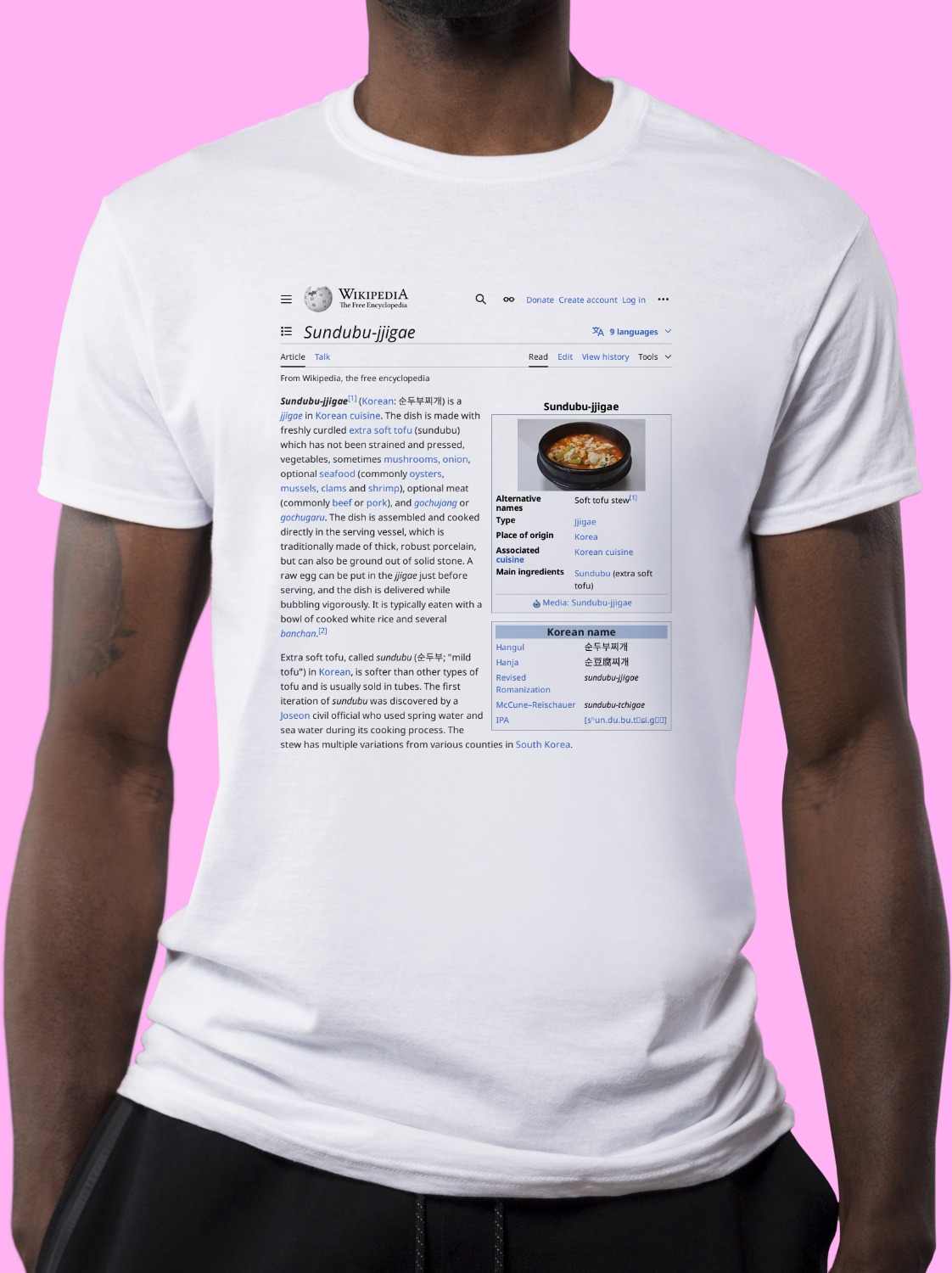
Sundubu-jjigae Shirt
A classic cotton tee emblazoned with the Wikipedia article on Sundubu-jjigae ↗.
cotton tee emblazoned with the Wikipedia article on Sundubu-jjigae ↗.- Preshrunk jersey knit
- Seamless double-needle 2.2 cm collar
- Taped neck and shoulders
- Tear away label
- Double-needle sleeve and bottom hems
- Quarter-turned to eliminate centre crease
Sundubu-jjigae (Korean: 순두부찌개) is a jjigae in Korean cuisine. The dish is made with freshly curdled extra soft tofu (sundubu) which has not been strained and pressed, vegetables, sometimes mushrooms, onion, optional seafood (commonly oysters, mussels, clams and shrimp), optional meat (commonly beef or pork), and gochujang or gochugaru. The dish is assembled and cooked directly in the serving vessel, which is traditionally made of thick, robust porcelain, but can also be ground out of solid stone. A raw egg can be put in the jjigae just before serving, and the dish is delivered while bubbling vigorously. It is typically eaten with a bowl of cooked white rice and several banchan.
Extra soft tofu, called sundubu (순두부; lit. mild tofu) in Korean, is softer than other types of tofu and is usually sold in tubes. The first iteration of sundubu was discovered by a Joseon civil official who used spring water and sea water during its cooking process. The stew has multiple variations from various counties in South Korea.
The dish has reached popularity overseas, making appearances in American and Canadian media such as Kim's Convenience of CBC Television. Restaurants that specialise in sundubu-jjigae can be found in many cities, usually Koreatowns, in the United States and Canada.
About Wikishirt
Wikishirt is a retail experiment that lets you buy a shirt with any Wikipedia Article printed on it. There are over 5 million Wikipedia articles, so we have over 5 million shirts.Check out our homepage for random featured shirts and more!